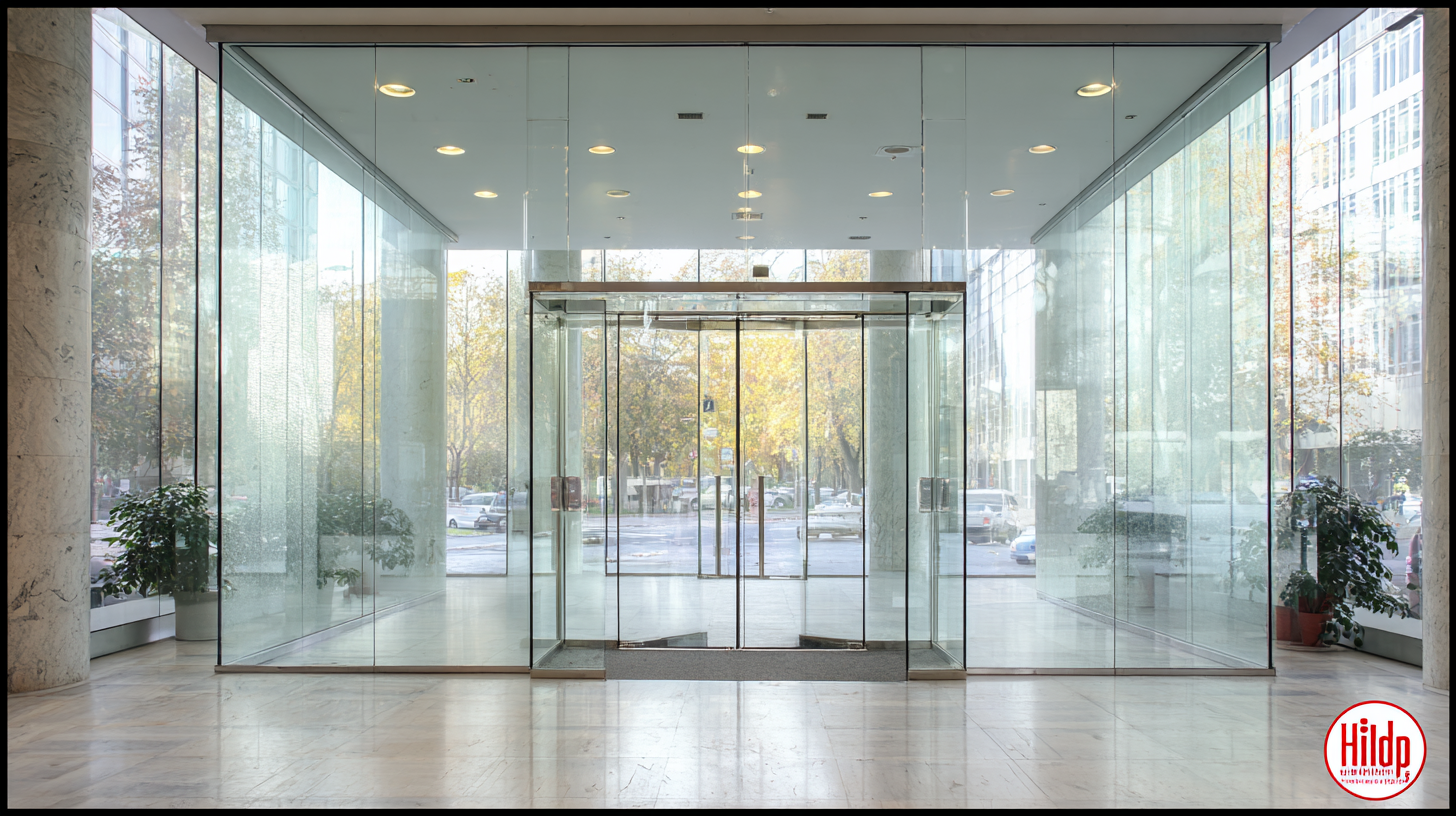
How to Choose the Best Tempered Glass Door: Essential Technical Specifications You Need to Know
In recent years, the popularity of tempered glass doors has surged, driven by their aesthetic appeal, durability, and safety features. According to a report by the Glass Association, the demand for tempered glass in architectural applications is expected to grow at a compound annual growth rate (CAGR) of 7.5% from 2021 to 2026. Choosing the best tempered glass door involves understanding essential technical specifications such as thickness, thermal performance, and safety ratings. With residential and commercial spaces increasingly opting for glass solutions to enhance natural light and modern design, selecting the right tempered glass door can significantly impact both functionality and visual appeal. As we delve deeper into this topic, we will shed light on critical considerations that will guide you in making an informed decision for your next project.

Understanding the Importance of Import and Export Certifications for Tempered Glass Doors
When selecting the best tempered glass door for your project, understanding the significance of import and export certifications is critical. These certifications serve as an assurance of quality, safety, and compliance with international standards. For instance, according to a recent report from the Glass Association, approximately 90% of consumers prioritize certified products when making purchasing decisions. This not only promotes consumer confidence but also reduces the risk of failure in harsh conditions.
Moreover, as demonstrated by recent developments in the agricultural sector, global certifications have become essential for market access. In Tanzania, local farmers have achieved international certification, enabling them to tap into global markets. Similarly, manufacturers of tempered glass doors procured with certifications can confidently export their products, knowing they meet the rigorous demands of foreign markets. This enhances competitiveness and opens up new avenues for revenue, reflecting a growing trend in the construction and design industry where quality assurance remains paramount.
Understanding the Importance of Import and Export Certifications for Tempered Glass Doors
Key Technical Specifications to Consider When Choosing Tempered Glass Doors
When selecting the best tempered glass doors for your home or commercial space, it's essential to focus on key technical specifications that ensure safety, durability, and aesthetic appeal. First, consider the thickness of the tempered glass; typically, a thickness of at least 10mm is recommended for enhanced strength and impact resistance. Additionally, look for doors that meet industry standards for safety, such as ANSI Z97.1 and CPSC 16 CFR 1201, which guarantee that the glass will shatter into small, blunt pieces rather than sharp shards upon impact.
Another crucial specification is the type of coating applied to the glass. Low-E (low emissivity) coatings not only enhance energy efficiency by reflecting infrared light, but they also reduce glare and UV radiation exposure. Additionally, examine the frame materials and hardware components; robust frames made from aluminum or stainless steel can provide additional support and stability. Lastly, pay attention to the insulation properties, especially if the doors will be installed in regions with extreme temperatures. By considering these technical specifications, you can ensure that you choose the best tempered glass doors suited for your needs.
How to Choose the Best Tempered Glass Door: Essential Technical Specifications You Need to Know
| Specification | Importance | Typical Values |
|---|---|---|
| Thickness | Structural integrity and safety | 1/4 inch (6mm) to 1/2 inch (12mm) |
| Surface Treatment | Durability and aesthetics | Clear, frosted, tinted |
| Edge Work | Safety and finish | Polished, bevelled |
| Heat Resistance | Safety against thermal shock | Up to 400°F (204°C) |
| Safety Standards | Compliance and assurance | ANSI Z97.1, CPSC 16CFR1201 |
| Transparency Level | Visibility and light transmission | Clear (90% light transmission) |
Top Types of Tempered Glass Doors to Enhance Your Space
When it comes to enhancing your living space, choosing the right type of tempered glass door can make a significant difference in both aesthetics and functionality. Among the popular options, sliding tempered glass doors are a top choice for modern spaces. According to a report from the American Glass Association, sliding doors account for approximately 30% of the glass door market, appealing to homeowners seeking to maximize natural light while providing ease of access. Their seamless operation and space-saving design make them ideal for both residential and commercial settings.

Another notable option is the bi-fold tempered glass door, which is increasingly favored for its versatility. Industry studies indicate that bi-fold doors have seen a 25% growth in popularity over the past five years, particularly in homes looking to create an indoor-outdoor flow. These doors can be completely folded away, opening up living areas to outdoor spaces, enhancing both the natural light and the perceived space in a room. With energy efficiency being a crucial consideration, many modern tempered glass options also come with low-E coatings that improve insulation by up to 30%, making them a smart investment for those looking to elevate their interiors while keeping energy costs down.
Evaluating Safety Standards and Regulations for Tempered Glass Products
When choosing a tempered glass door, understanding safety standards and regulations is crucial. Tempered glass, known for its strength and resistance to thermal stress, must comply with various safety standards to ensure it can withstand impact and minimize the risk of injury. In many regions, these standards are set forth by organizations such as ANSI, ASTM, or local building codes. Checking that the glass meets or exceeds these specifications is essential to ensure both product safety and peace of mind.
Tip: Always look for certifications or labels indicating compliance with recognized safety standards. This can include markings of the manufacturer and relevant safety ratings. Also, consider the thickness of the glass; typically, thicker glass offers improved strength and durability, which is vital for high-traffic areas and external conditions.
Another important aspect to consider is installation and handling. Proper installation is just as significant as the glass itself. Ensure that the installer is familiar with the specific requirements for tempered glass to guarantee that it will perform as expected under stress.
Tip: Regular maintenance checks can help ensure the longevity and safety of your tempered glass door. Pay attention to any cracks or chips that may indicate a need for replacement or repair, and always follow the manufacturer's guidelines for care.

How to Select the Right Suppliers for Quality Tempered Glass Doors
When selecting the right suppliers for quality tempered glass doors, it’s essential to consider a few key factors that ensure both the integrity and aesthetics of your investment. First, verify the supplier's certifications and standards compliance. Reputable suppliers should be able to provide documentation that proves their glass products meet industry safety and quality standards, such as ANSI Z97.1 and ASTM C1048, which focus on the durability and performance of tempered glass.
Another crucial aspect is the supplier's experience and reputation in the market. Established suppliers often have a proven track record and positive reviews from past clients. It's beneficial to seek out testimonials, case studies, or references that showcase their expertise in manufacturing and delivering high-quality tempered glass doors. Additionally, consider their range of products and customization options, as flexibility in design can significantly enhance the functionality and appearance of your glass doors in various settings.
